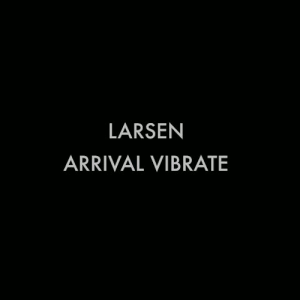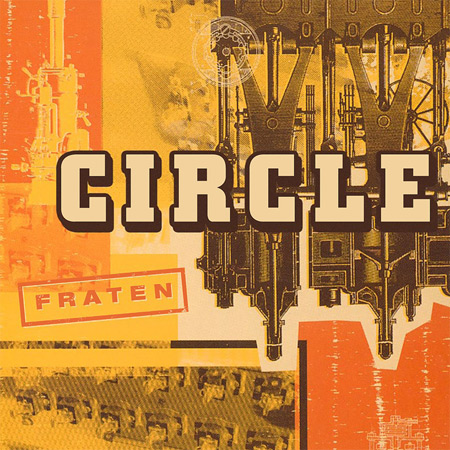 On Arrival Vibrate, Italian post-rock magicians Larsen conjure the rhythmajick of Z’ev in a sprawling twenty-five-minute chamber rock meditation.
On Arrival Vibrate, Italian post-rock magicians Larsen conjure the rhythmajick of Z’ev in a sprawling twenty-five-minute chamber rock meditation.
If you were to observe the floorplan of the Temple of Amun at Karnak, Egypt’s sprawling 250-acre edifice, you might assume it was built willy-nilly over the span of its nearly 2,000 year construction. After all, how could there have been a premeditated construction plan for the temple’s head-swirling galleries of pillars, nested chambers, and intricate corridors for literal millennia? Especially with it being worked on by so many different pharaohs? It seems like the embodiment of chaos.
The Temple of Amun-Ra at Karnak is the representation of order emerging from chaos, however. It’s actually the exact opposite. Researchers believe that the temple was constructed according to the Golden Ratio, which can be found everywhere from the human body to a nautilus to the Mona Lisa. It’s the underlying principle that shapes life itself.Stefan Joel Weisser, better known as Z’ev, is best remembered for channelling the theurgic id during post-industrial ritual performances in the early days of industrial music. Z’ev was also a highly-trained and well-respected occult philosopher and magician as well, however, particularly in the Jewish mysticism of the Qabalah. Z’ev transmuted the concepts of Hebrew numerology into a new system of ritual magick, known as rhythmajick, translating the twenty-two letters of the Hebrew alphabet into corresponding rhythms. These rhythms could be used during magickal ceremony, blending the logos-driven Western tradition with the primal fire of ceremonial magick.
On 13 March 2018, Larsen assembled at the Médecins Sans Frontières International at the National Museum Of Cinema in Torino, Italy to honour the memory and legacy of their late friend and collaborator with a sprawling, ritualistic, meditative performance. Using Z’ev’s rhythmajick technique, Larsen translated one of his poems, “Arrival Vibrate,” from which this document derives its name, into a language of rhythm expressed through their unique brand of chamber post-rock. Operating as a quartet for this particular occasion, Larsen conjure a ceremonial air with an artful array of acoustic instruments — accordion, glockenspiel, drums — and electronics — electric guitar, synth and electric viola — using the rhythmajick text as a guiding principle for their improvisation/performance. Beginning with only a spare, sparse, feedback-like harmonic, the textures build and build, until breaking into a heavy, leaden breakbeat courtesy of Marco “il Bue” Schiavo‘s drumming. An adventurous two-chord melody emerges, mysterious, expansive, only to be swallowed by the drone, only to have the whole thing begin afresh.Certain motifs emerge again and again, such as a nine-note glockenspiel rhythm, like a half-remembered dream or a reoccurring pattern seen in nature. It gives some much-appreciated sense of order to the maelstrom, which separates the good improv performances from the great. It also allows an opportunity to simply appreciate the tone and texture of Larsen’s muscular electric guitars, the crystalline feedback of the synths and electric viola. It also takes them back to their arthouse roots performing anonymously behind a screen for Michael Gira, and offers a re-appreciation of both minimal improv and post-rock as a genre in the process. It takes them both out of the white cube art gallery and into the wider world, out of dingy nightclubs and dusty occult bookstores, along the way.
It’s beyond refreshing to hear post-rock get a shot in the arm, expanding upon the mock-heroic meta-narratives of Mogwai and Explosions In The Sky-style crescendo rock into something more artful, mysterious, metaphysical. It stands beside documents like Rachel’s Systems/Layers or The Boxhead Ensemble‘s Dutch Harbor: Where The Sea Breaks Its Back as an example of what is capable when rock ‘n roll instrumentation meets artful energy and high concept. Larsen should be proud, as should Z’ev.-J Simpson-



